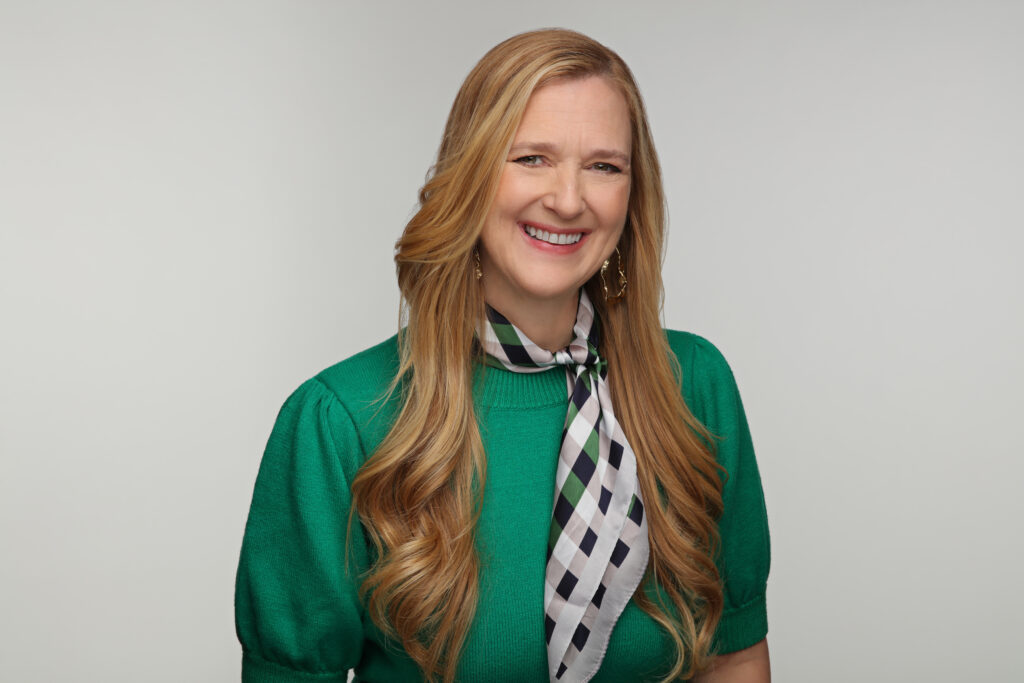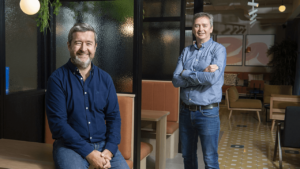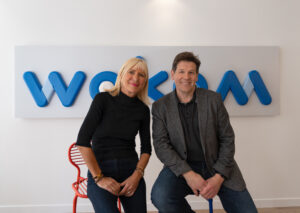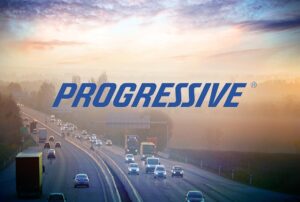Lisa Wardlaw is a force to be reckoned with on the insurance scene. Having joined the industry inadvertently (like all experts in the space) via a stint at PwC just after college, she has become one of the foremost influencers in the space.
As part of her rise through the ranks, she spent almost 12 years at the world’s largest reinsurer, Munich Re, culminating in her performing the role of EVP, Global Digital Strategy & Transformation Officer, Global Reinsurance. She then went on to become Chief Strategic Financial Officer at Farmers Insurance.
Today, she is the Founder and President of her own startup 360 Digital as well as an industry consultant. She is also truly passionate about helping to transform the global insurance industry into an entity that befits the technologies, demands and lifestyles of its time. Insurtech Insights finds out more.
Tell us about your current role and what it entails.
Certainly, my approach in the insurance and insurtech landscape is far from cookie-cutter. I am the President and Founder of 360 Digital Immersion, and my focus lies in supporting insurtech startups, insurance companies, and reinsurers through transformative innovation and digital initiatives. My services are intentionally customised and tailored to suit individual needs, ensuring that the solutions I offer align precisely with the goals and challenges of each client.
In essence, what I do boils down to a few core categories. First, I often come into the picture when someone has tried a strategy or approach that isn’t yielding the desired results. This could mean they’ve hit a plateau or are struggling to surpass a certain revenue threshold, such as the notorious US$3 million ARR cliff. I work with these individuals and companies to identify barriers and devise strategies to break through them.
Secondly, I’m frequently sought out by individuals within the corporate world who are attempting to implement transformative changes within their organisations. These ambitious change-makers are looking to learn from those who have successfully navigated similar journeys before. I offer guidance and insights on how to navigate corporate structures, foster innovation, and drive digital transformation effectively.
Lastly, I often collaborate with forward-thinking visionaries who are venturing into the insurance adjacency space. These are individuals or entities that aren’t strictly part of the traditional insurance landscape but possess innovative ideas that can revolutionise the industry. They reach out to me because they are seeking a partner who can help them bridge the gap between their creative concepts and the insurance community’s needs. They are interested in solutions and strategies that don’t adhere to rigid insurance norms but instead focus on solving problems and delivering value.
Why did you choose the insurance industry as your career? And is there a story there?
Absolutely, my journey into the world of insurance and innovation is quite unique. Growing up, my parents had diverse backgrounds – my mother was a dancer, my dad an engineer. I was the eldest child in a family of entrepreneurs, though in the 70s, that meant they had their own businesses after dropping out of college. My dad, in particular, was keen on me pursuing what he considered a “stable job” in the corporate world, rather than the entrepreneurial path they had taken.
Initially, I was majoring in chemistry and minoring in economics, but in my senior year of university, I decided I didn’t want to continue down that path. I switched my major to business and minored in economics instead. I ventured into public accounting and got hired by PwC, even though I had little accounting background or internship experience. They recognized my thinking abilities, curiosity, and intellectual background as valuable assets, and despite my lack of familiarity with insurance, they connected me with it.
Through this experience, I developed a fascination with the industry. I realised that insurance played a crucial role in the economy – insurance companies invested in the very assets that brought stability to the investment markets. Premiums collected from consumers were reinvested in the economy through various investments. My background as an accountant allowed me to see both sides of this dynamic – the liability and the asset sides.
This perspective on insurance as an economic pillar stuck with me as I progressed in my career. Eventually, I became a CFO and COO, and I found myself delving into complex digital solutions and innovation projects. This is where my interest in insurtech began to blossom. I’ve always had a passion for technology and a keen interest in solving complex problems. I began designing and conceptualising solutions that were ahead of their time – what you might call horizon three or horizon four-level innovations.
So why did I choose to apply these forward-looking ideas to an industry that might be perceived as traditional or resistant to change? The answer lies in my belief that there’s immense untapped potential in the insurance industry. While many are focused on digitalization and automation, I see an opportunity to make a lasting impact by introducing transformative innovations. I’m driven by the idea that insurance, despite its complexities and challenges, can benefit greatly from creative thinking, tech integration, and solutions that address real-world problems. This is what fuels my passion for insurtech and drives me to collaborate with startups, insurers, and reinsurers in their transformative journeys.
It sounds as though you were lucky enough to stumble into exactly the right industry for your talents and interests.
Without a doubt! And it was really because I saw the potential platonic shift. I started looking at this from a projection and future visioning maybe eight plus years ago, which is what happens if our traditional consumer no longer exists? There is now the gig economy, people making money from multiple sources, and there is the non-traditional workforce.
What really fundamentally bothered me was what that would do to the economy if insurance companies didn’t sell financial products in which they invest those premiums back into the investment markets of those economies? So I started devoting myself to ways that can create inclusion and momentum in the industry.
My purpose is very macro and I would say I’m one of the few executives that has such breadth to my title: from C F O all the way up to strategy, black ops digital technology. When I became C F O, I learned about data and innovation, so from a reinsurer perspective and a carrier perspective, I am intentionally focussed on how to help the industry achieve this horizon three and beyond. When I left the corporate world and joined an insurtech, I devoted myself to that too, And I quickly realised that each insurtech on its own is a piece of the puzzle, but not the whole puzzle. In order to affect change, you need to be in a different position that sees the industry as a whole.
Given that you have this very broad perspective, if you could solve one major transformation problem within the industry, what would it be and why?
My word for the year is “activate,” and my main focus has been on being dynamic. Let me explain what I mean by this if I were to tackle an industry challenge.
Our industry is currently quite static. And by that, I don’t mean we’re slow or stagnant like some might say, but rather that we’re rooted in processes that are resistant to change. These processes were established long before we could easily adapt to real-time risks and changes. Everything we do is built around assessing risk at a specific point in time. Think of it like this: Are you healthy at this exact moment? What’s your driving ability right now? What’s the risk to your home at this instant? It’s all based on snapshots in time.
But the world is evolving towards constant, real-time updates. Take for instance the streaming of information. I recently spoke with my husband about disability policies, and it struck me how these policies don’t accommodate sabbaticals or the shifts in life that are happening more frequently nowadays.
Our industry, in a sense, is experiencing a form of organ rejection. New technologies, advancements, and business models are flooding in like the pressure from an open fire hydrant. But our static processes can’t handle this influx. We’re trying to fit these innovative, real-time capabilities into processes designed for point-in-time assessments, such as underwriting and claims processing.
If I had a magic wand, I’d want everyone to grasp this concept. We need to acknowledge that our industry needs a fundamental shift, not just the addition of new technologies. We must transform these static processes into dynamic ones that continuously assess risk and ensure resilience.
I’ve had discussions with industry experts about this, but the challenge lies in turning this conceptual shift into a reality. Currently, everything is still built around those point-in-time assessments, and that needs to change. We should be enabling the flow of real-time information seamlessly, much like streaming services provide constant updates.
Addressing this challenge could elevate our industry to new heights and prevent the impending shift that I believe is coming. Another problem I’d tackle is creating innovative products that truly break away from the mould of existing ones. Most current innovations are variations of traditional products, and I think we need to look beyond that.
Our world is changing; the economy is shifting. There’s a new landscape where traditional roles and patterns don’t apply. This new economy is often not served well by existing products. Let me give you an example: disability policies designed for the modern gig economy. They don’t fit the needs of someone whose livelihood depends on algorithms and social media engagement.
That’s where my concept of “algorithmic insurance” comes in. We need products that cater to the realities of today’s economic landscape, acknowledging the value that non-traditional careers bring to the table. Whether it’s supporting entrepreneurs with sabbaticals or covering algorithmic interruptions, our industry needs to evolve its product offerings.
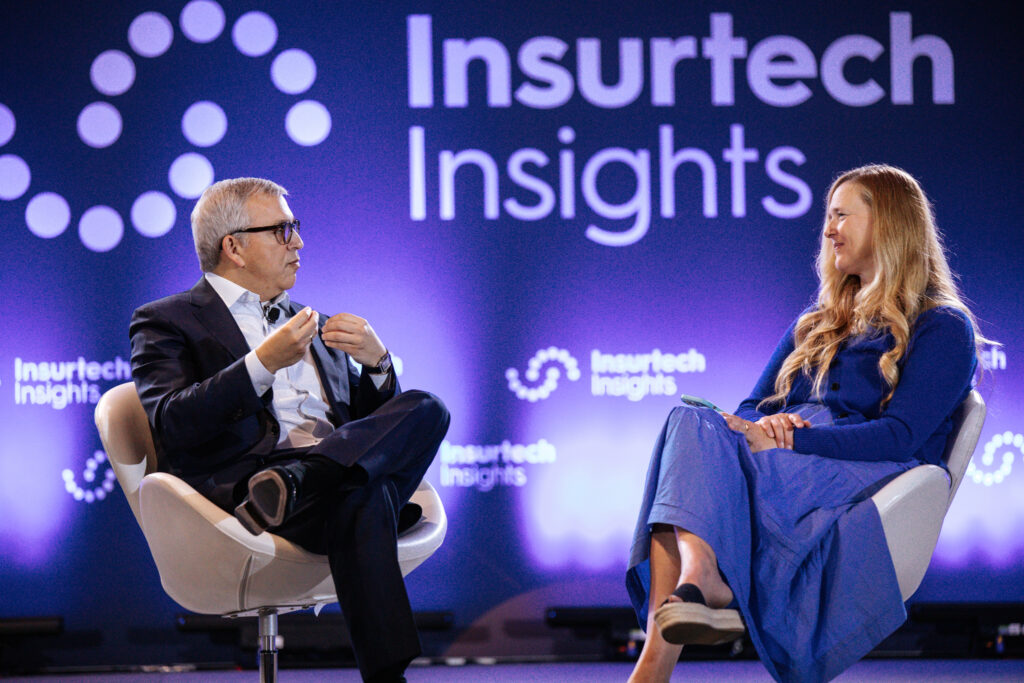
How are you practically implementing your long-term plans for the industry?
About a year ago, I came up with a term I call “lifestyle assurance.” It’s a play on words, where instead of “in life,” I use “in” from insurance and “e N” from assurance. The trajectory of this concept goes from left to right in terms of maturation and societal relevance. I believe “ees” (in between “in” and “assurance”) is the next step, followed by “assurance” at the top. This concept aligns perfectly with what you were discussing earlier.
It’s quite a departure from the traditional insurance model. To illustrate, imagine a child receiving a set of Legos. I often use this analogy of Legos and how startups are like these pieces. Marketplaces, on the other hand, are akin to colour-coded Legos. My role is more like that of a Lego Master, someone who takes these pieces and creates the versatile three-in-one kits.
So, with the people I collaborate with, I function in a similar way. I’m like the one controlling the board, understanding the potential of these Lego pieces. I then figure out how to activate them and incorporate them into designs, just like constructing a cargo plane alongside an aeroplane and a helicopter. This approach goes beyond mere matching of insurtechs with suitable carriers for projects. I’m actively engaged in helping both sides build – they often don’t fully comprehend how to utilise the various components.
In a way, I’m creating that instructional booklet for the industry, teaching them how to effectively use these parts. My son, who’s eight years old, plays with these Lego kits a lot, and I aim to be the person behind the scenes who develops that guide for the industry. This directly ties into who I collaborate with and how I go about it.
How challenging is that process, given that the insurance industry is known as a slow mover?
So, first of all, I wholeheartedly acknowledge that insurance has earned its reputation as a slow adopter of technology due to various reasons like compliance and regulation. We tend to be captivated by the allure of shiny new technologies, placing them in research and development, but rarely integrating them effectively.
At present, I’m observing both sides of this phenomenon. On one hand, there’s the shiny toy syndrome – these technologies are touted in every annual report, featured in webinars, and celebrated in keynotes. However, on the other hand, there’s a realisation that just having these technologies isn’t enough. We’re aware that they must be employed with a purpose.
I’ve seen firsthand that these technologies are being deeply incorporated into the R&D aspects of major carriers. The challenge now is to apply and safeguard these technologies, ensuring they’re used optimally. One area where traction is building is policy form interpretation. We’re also exploring how to leverage digital twins for executing processes that are difficult to carry out with our customer base.
Furthermore, we’re investigating sustainable AI that leaves data in place to learn from it while maintaining anonymity and adhering to regulations like GDPR. However, while these aspects are promising, I haven’t yet witnessed a comprehensive integration of all these elements. This is why my colleagues Sabine, Matt, and I are creating bespoke content to address these aspects and how they relate to sustainability.
It’s important to note that true integration requires both breadth and depth. Merely applying these technologies as point solutions can provide some benefits, but they won’t match the full potential that generalised AI offers. We need to be strategic, understanding that some aspects will be suited for risk decisioning (static) while others will excel in portfolio optimization and management (dynamic), which are central to insurance.
To expand on this, imagine the concept of climate change. While we can’t alter the frequency and severity of events quickly, we can reshape the economic impact of repairs. Consider this: after a catastrophe, the cost of materials skyrockets due to increased demand and diminished supply. By applying generative AI, we could predict these scenarios, create digital twins, and tie them to financial instruments like derivatives, futures, and forwards. This would enable us to pre-purchase materials before the event and secure better prices, thereby changing the economic landscape of recovery.

Do you think, given the current situation with insurers pulling out of certain areas where weather is a problem, that AI and innovation is likely to address these issues soon?
Generative AI is a tool that has the power to not just automate and improve existing processes, but also to drive innovation and address real-world problems. It’s important to avoid getting stuck at the surface level and to delve into the real challenges that the industry and the world face.
I am concerned about the potential shift towards unaffordable insurance due to escalating climate and extreme weather events. This is a pressing issue that needs to be tackled, and generative AI could be a key player in finding solutions.
There needs to be a collaboration between insiders and outsiders. Outsiders often bring fresh perspectives and innovative ideas, while insiders possess the knowledge and understanding of the industry’s complexities. Both viewpoints are essential for creating meaningful change. It’s about shifting the mindset from a strictly linear perspective to a more multidimensional one.
The insurance industry has a strong tradition of expertise and depth – what you refer to as longitude. This is essential for the industry’s stability and precision. However, what’s often lacking is lateral thinking, the latitude, the ability to see the broader picture and connect the dots in innovative ways. This balance is crucial for creating comprehensive and effective solutions.
The notion of being “C Dexter” resonates deeply. In an ever-evolving landscape, leaders need to be digitally and functionally dexterous, understanding not just the vertical aspects of their role, but also the horizontal connections that shape the industry. This transformation goes beyond teaching digital skills; it’s about fostering a new way of thinking that integrates different dimensions, perspectives, and possibilities.
Insurance is indeed a linear industry by nature, but this doesn’t mean we can’t foster nonlinear thinking within it. It’s about nurturing the kind of thinking that can drive meaningful innovation, address complex challenges, and steer the industry towards sustainable and adaptable solutions. This mindset shift is an essential step in embracing the potential of generative AI and other transformative technologies.
Can you tell us about Insurtech Israel, which is one of the ventures you are currently, actively involved with?
Sure! The innovation ecosystem in Israel is truly remarkable. It’s like the birthplace of groundbreaking ideas and technological advancements. The pace and scale of innovation there are unparalleled, and Israeli entrepreneurs are known for creating not just concepts on paper, but actual working technology. This is a significant reason why I’m enthusiastic about collaborating with InsurTech Israel. They emphasise bringing tangible solutions to the table, and it’s incredibly refreshing to work with a community that’s so action-oriented.
InsurTech Israel has incubated over 300 companies, which speaks volumes about their dedication to fostering innovation. Israel’s tight-knit community allows for close collaboration and rapid progress. However, to reach the next level and secure broader investments, expansion into other countries becomes crucial. This is where the United States, notably North America, often comes into play as the primary target market for Israeli InsurTech startups.
Navigating the US market and adapting to its distinct dynamics is a unique challenge. It requires a different approach, given the cultural differences and the sheer scale of the market. Working closely with InsurTech Israel, I assist in anchoring their initiatives in North America. Whether it’s aiding startups in their growth and scaling efforts or helping them recalibrate their strategies based on market feedback, my role is to provide expertise and guidance.
InsurTech Israel’s collaboration with my network enables them to leverage a broader spectrum of resources. This includes professional managed services that can assist with legal entities, captive setups, marketing strategies, and more. I ensure that every startup has access to the right support system as they venture into the North American market, helping them make informed decisions and achieve their objectives.
In essence, our collaboration is about blending the innovative spark from Israel with the market expertise of North America. It’s a bridge that connects these two worlds, creating a space where innovation flourishes, solutions are developed, and startups are empowered to succeed on a global scale.
And finally, what inspires you in insurtech today?
What truly ignites my passion at this moment is the potential to set in motion that dynamic enablement, to bridge the gap between traditional practices and the dynamic nature of today’s world. This is intricately linked with fostering innovation and introducing entirely novel products and lines of business that haven’t yet seen the light of day. When I reflect on where I channel my efforts, this is the primary focus of my endeavours. Whether you encounter me in various contexts, you’ll find that I’m consistently engaged in various facets of this pursuit.
Interview by Joanna England
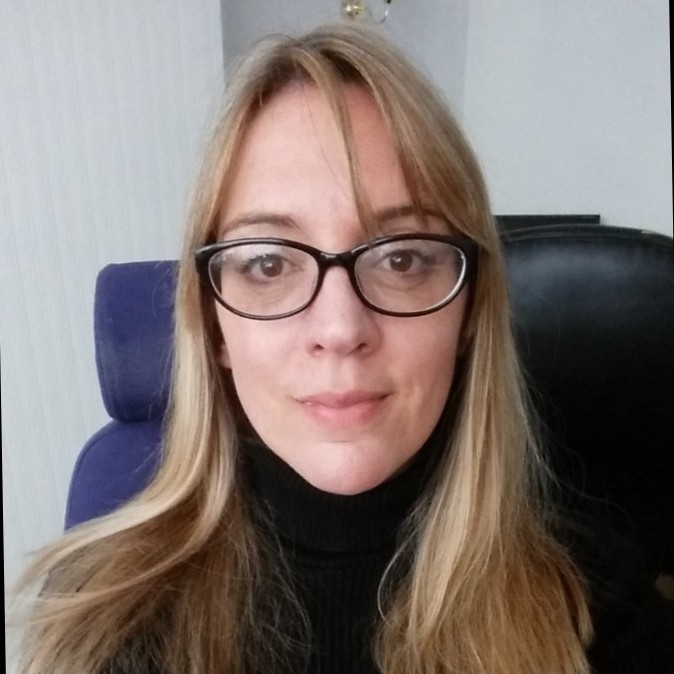
Joanna England is an award-winning journalist and the Editor-in-Chief for Insurtech Insights. She has worked for 25 years in both the consumer and business space, and also spent 15 years in the Middle East, on national newspapers as well as leading events and lifestyle publications. Prior to Insurtech Insights, Joanna was the Editor-in-Chief for Fintech Magazine and Insurtech Digital. She was also listed by MPVR as one of the Top 30 journalist in Fintech and Insurtech in 2023.

